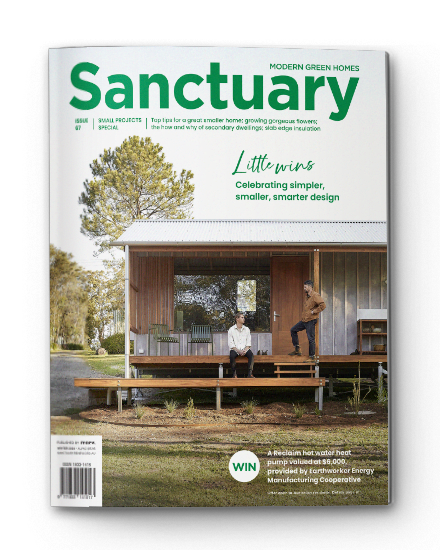Red brick reno
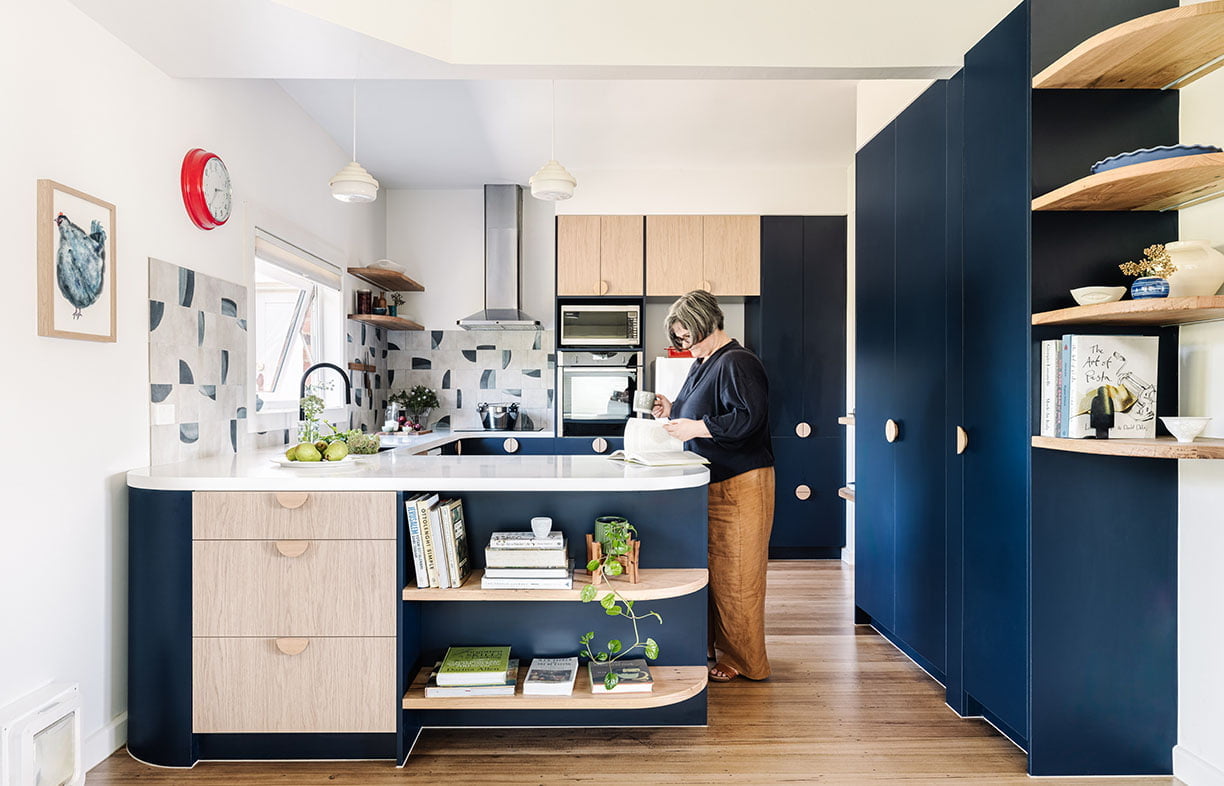
After years of gradual upgrades, this leaky brick cottage in Central Victoria is now an exemplar of comfortable, efficient, low-bills living.
At a glance
- Renovation focused on functionality and thermal efficiency
- Minimal layout changes and no extension
- Energy rating raised from 1.7 to 8.9 Stars
- Great results on a strict budget
Ten years ago when Kerryn Burgess was looking for a property to buy in Kyneton, 75 kilometres north-west of Melbourne, her priority wasn’t the house. “I wanted a garden more than a house,” she explains, “so I went hunting for a small house on a large block, with a good northern aspect.”
She found a small red brick cottage on “745 square metres of couch grass, stumps and weeds”, and launched into a “back-to-front” development, starting with the garden: rainwater tanks and irrigation, composting bays, reclaimed brick paving, drought-tolerant perennials, vegetable beds, a netted orchard and an extensive chook run. “For eight years or so I must have worked on the garden all weekend, every weekend,” she says.
She did tackle upgrades to the house little by little as she could afford them, installing ceiling and blow-in wall insulation, a heat pump for hot water, and double-glazed windows over the years. Having reached the point where she felt she had done all that she was able to project manage herself, in 2022 Kerryn enlisted local building designer Anthony Jenkin of Outlier Studio for the final push. “I wanted a more functional kitchen and bathroom, and better thermal performance – Kyneton’s winters are frosty,” she says. “It was all about setting myself up for my eventual retirement with a comfortable house and lower bills.”
Kerryn had a strict budget for the project, so Anthony brought builders Dean and Darryn Backman on board early in the process to ensure constructability and value management. As airtightness was a priority, a blower door test was done before the build started, to identify the problem areas in advance and enable more targeted use of the budget. “It was also a great training session for the carpentry crew,” says Dean. “They should be learning this stuff in trade school, but they often don’t.”
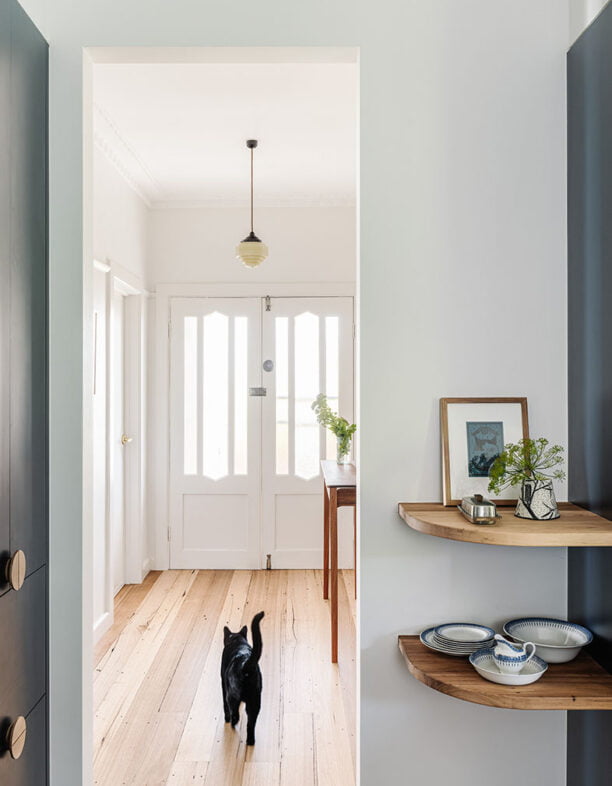
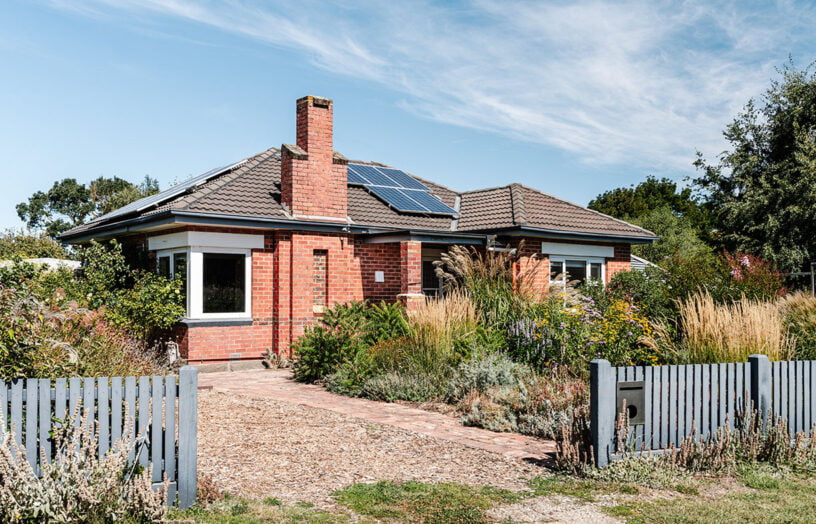
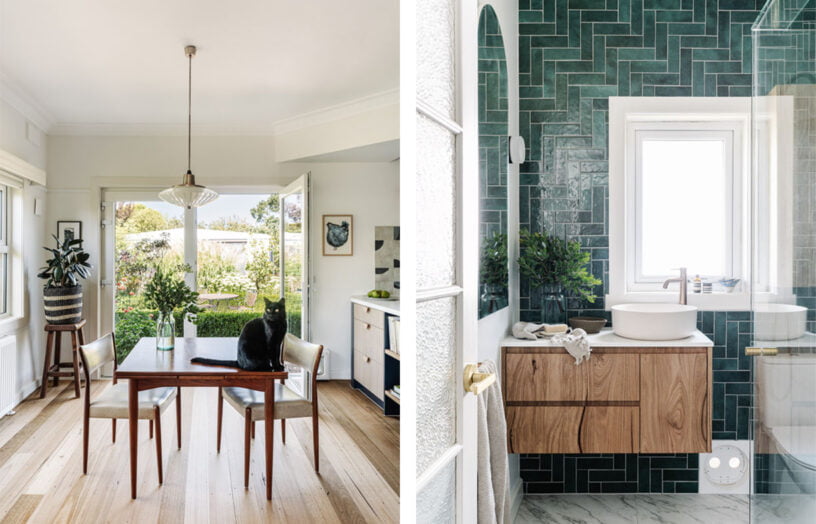
Anthony made minor changes to the two-bedroom house’s layout, including closing off doors from the entry to the lounge and from the kitchen to the backyard; adding a large glazed double door from the dining area to outside and a door into the laundry from the second bedroom; and reconfiguring an awkwardly placed cupboard to open into the hallway rather than into the main bedroom. The dated kitchen and bathroom were redone, with more efficient layouts and plenty of storage.
The main focus, however, was on areas you don’t see: filling all those gaps and ensuring a high level of airtightness. “The biggest challenge was detailing the subfloor,” says Dean. “We installed a continuous membrane over the existing joists, taped to the base of the walls, before the new floor of reclaimed timber was put down.” The architraves were also taken off and the spaces around the windows properly sealed, which made a huge difference.

Kerryn says that an airtightness of a maximum of 5 air changes per hour at 50 pascals pressure (ACH50) was written into the build contract, but the team kept going the extra mile to exceed that. “Blower door test day at the end of the build was exciting,” she recalls. “There were people running around everywhere with tubes of sealant, filling cracks and watching the ACH number drop!” Eventually they achieved just under 1 ACH50, close to Passive House performance (excluding the front door, which was draught-sealed and will be replaced with a new, more thermally efficient door when funds allow). A decentralised mechanical ventilation system with heat recovery (MVHR) to the living space and bedrooms ensures fresh air in the very airtight house, and a sophisticated bathroom extraction fan with humidity and CO2 sensors helps too.
Having lived in her shed during the build, Kerryn moved into the finished house in December 2023. “The real test of the results will come this winter, but I’m already noticing how much quieter and more peaceful it is,” she says. “There’s very little air movement, and it’s light and bright.”
She commends her designer and builder for working so closely together: “It was pretty much stress-free for me.” Dean and Anthony are also proud of the project, which saw the NatHERS energy rating for the house reach an impressive 8.9 Stars. “So many people live in leaky, cold, draughty houses and think that’s normal,” says Dean. “This project shows what can be achieved with just a little more care than a ‘standard’ renovation.”
Further reading
 House profiles
House profiles
Airy flair
A minimalist renovation to their 1970s Queenslander unlocked natural ventilation, energy efficiency and more useable space for this Cairns family.
Read more House profiles
House profiles
Pretty in pink
This subtropical home challenges the status quo – and not just with its colour scheme.
Read more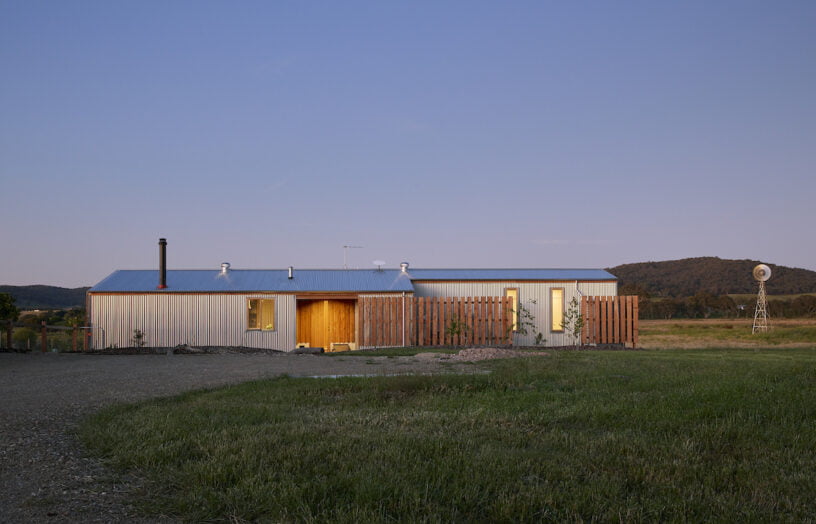 House profiles
House profiles
Mini homestead
A small off-grid home in rural Victoria, built to a simple floor plan.
Read more

